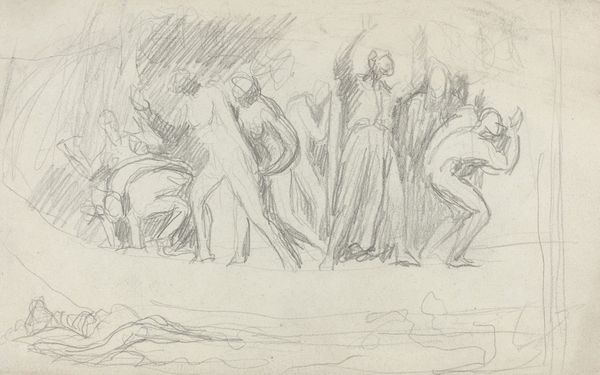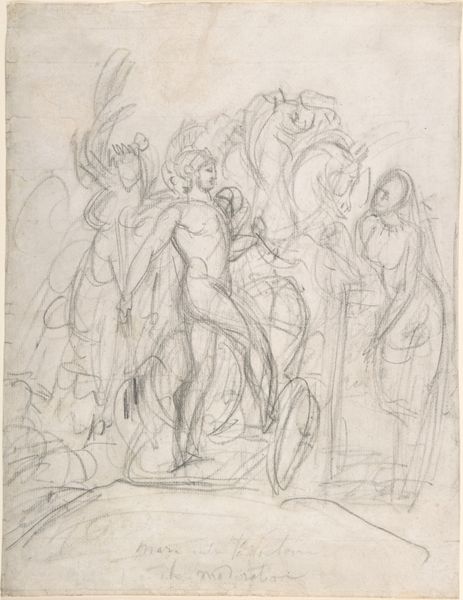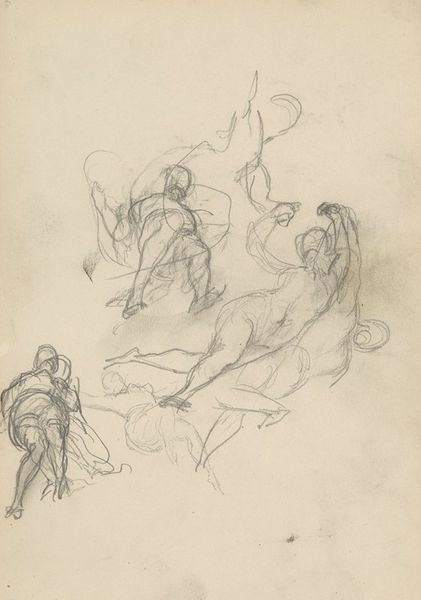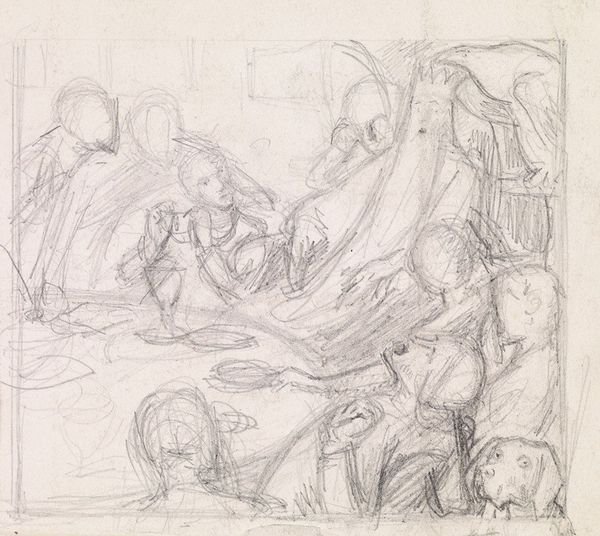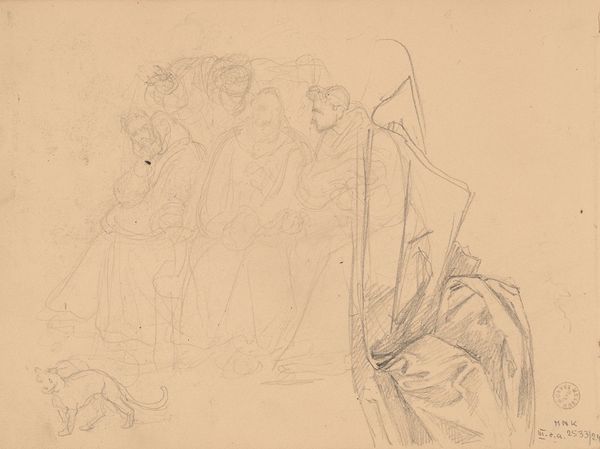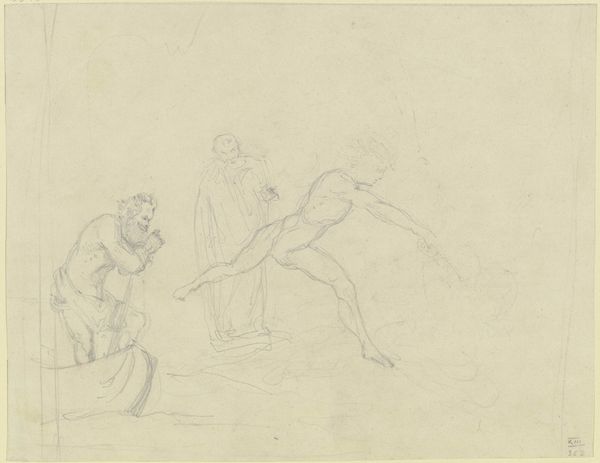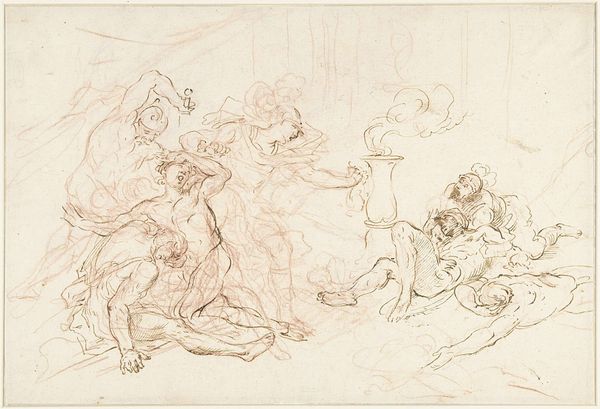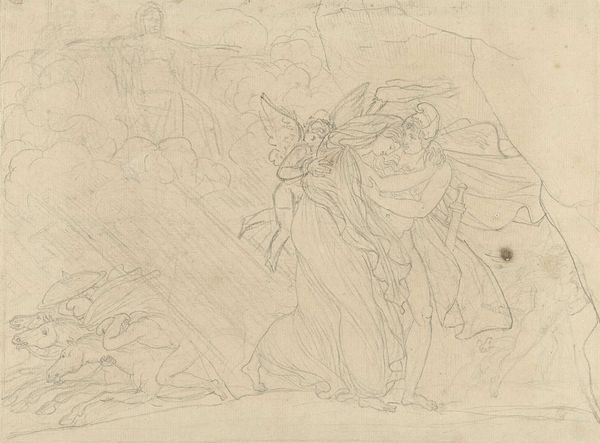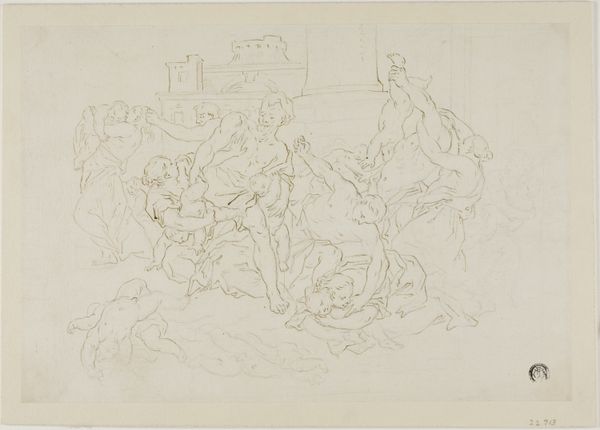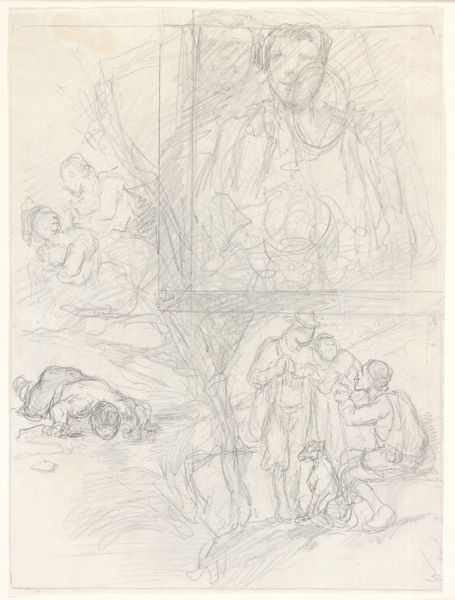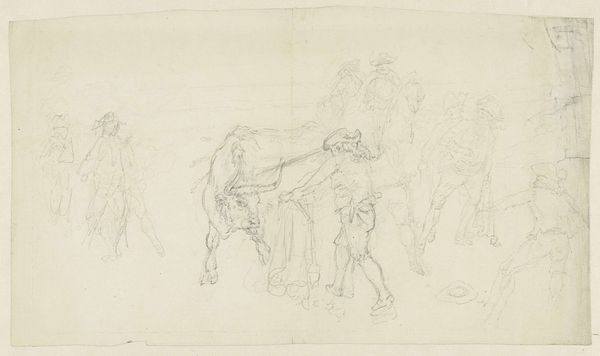
#
amateur sketch
#
light pencil work
#
pencil sketch
#
incomplete sketchy
#
idea generation sketch
#
ink drawing experimentation
#
pen-ink sketch
#
pencil work
#
fantasy sketch
#
initial sketch
Dimensions: height 193 mm, width 182 mm
Copyright: Rijks Museum: Open Domain
Curator: Looking at this drawing, it strikes me as a hushed and contemplative scene. It’s rendered in light pencil work, giving it an ethereal quality. Editor: Yes, this is "Studies voor een Madonna met een heilige monnik" by Massimo Stanzione, created around 1639. What we're seeing are preliminary sketches, an idea generation sketch if you will. We can appreciate the genesis of an artwork here. Curator: It’s fascinating to see the artist’s process laid bare like this. It appears incomplete, sketchy... even amateur almost, revealing layers of his artistic choices. How might Stanzione’s social context have shaped these images of the Madonna? Editor: Naples in the 17th century was deeply religious, and Stanzione certainly tapped into that vein. But even within this deeply Catholic milieu, images of the Madonna took on distinct political meanings. Patronage from different noble families, for example, shaped the production and dissemination of such artworks. This drawing acts as an important record of that visual history. Curator: Absolutely. And within that devotional imagery, what readings are available for us through modern intersectional lenses, of the virgin, of motherhood? Do the Madonna’s conventional representation imprison or empower, especially as her image here seems burdened by those who hold the true authority—those being men? Editor: A worthwhile point, though it would need the completed image to see what he eventually makes of these sketches and their representation of the divine. Stanzione did have quite an impact; his workshop became something of an academy. Many women artists like Annella di Massimo emerged from it, suggesting it might have been quite a generative space. Curator: Seeing the faint lines and the clear experimentation happening on the page emphasizes the agency inherent in artmaking. This almost offers a different reading to the polished final images of this time period by deconstructing the power structures embedded in these images, even for today’s viewers. Editor: Indeed, these 'studies' allows a deep view into artistic practice within a certain historical moment, but how its significance transforms across time and viewership really opens exciting dialogues. Thank you for those thoughts! Curator: Thank you.
Comments
No comments
Be the first to comment and join the conversation on the ultimate creative platform.

